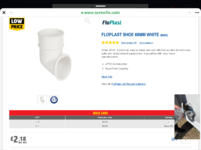Triple Point
Free Member
Hi All,
I've just purchased my very first Motorhome, a Compass CV20 van conversion.
The van came with a 10m EHC cable but no water hose.
Is the EHC cable a suitable length? Or do you find you need more?
Also what length of hose to you find useful? Food safe or garden hose?
Many Thanks
I've just purchased my very first Motorhome, a Compass CV20 van conversion.
The van came with a 10m EHC cable but no water hose.
Is the EHC cable a suitable length? Or do you find you need more?
Also what length of hose to you find useful? Food safe or garden hose?
Many Thanks




